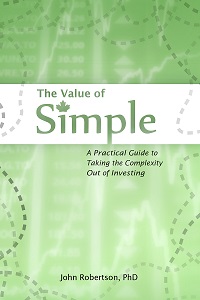HDTVs
December 16th, 2008 by PotatoFor the better part of the last decade high definition TVs were the “it” item, way up there on the list of what people were milking the equity of their houses to get. For the most part, I didn’t really get it: the standards were changing in Internet time: from 480p through 720p to 1080i/p in less than 10 years: and while 1080p looks to just be settling in as a standard that might linger for longer than a goldfish, who knows what the new year might bring. In addition to the standards, we faced a variety of physical connections: from coax and RCAs to component, s-video, VGA, DVI, HDMI, and I’m sure someone out there has an optical connection (even if only for, ironically, audio). I wasn’t really satisfied with that, especially for such an expensive piece of home entertainment that has a history of lasting (my current TV is 15 years old and will likely last at least 5 more; the one it replaced lasted for 20). Some videophiles (Netbug, cough) do seem to get genuine enjoyment from HDTV and can tell the difference, but for me I don’t see standard definition as something that hurts my enjoyment of a movie or game; it’s not immersion-breaking. Once the lack of content (and the lack of uniform content — the few HDTV stations that are out there can’t seem to decide how they want to broadcast, some even letterboxing the widescreen stuff and transmitting at 4:3) is factored in, the investment just didn’t seem to be worth it.
My parents, just over a year ago, bought a beautiful LCD TV at 1080p and a PS3 to go with it (they really only use it for the blu-ray player). And they loved it. They gushed about how beautiful and sharp and bright their picture was. I went over there… and saw that they were watching standard-def cable. Stretched standard-def cable. Once I got the box hooked up properly for them and tuned to an actual high def channel they were even more ecstatic… but the point is that the biggest difference for them was that the picture was big. Even now that they’ve got it all figured out, they still do 99% of their TV viewing in standard definition. Over a year later with the fancy PS3 blu ray player and they own a grand total of 3 blu ray titles.
I’m clearly not Netbug, or I would have long since succumbed to the HD bug. I figure if I want to watch something in high definition, I’ll do it on my 22″ computer monitor, which looks freaking huge when sitting in my desk chair an arm’s length away. In fact, that’s what I do now. I’ve watched my TV for maybe 10 hours in the last year — I’ve spent more time gaming on it with the Wii. I just got so sick of the few shows I tried to keep track of being moved around all the time and having to go catch up on my computer anyway that this year with the new TV season I’m not bothering with the TV and VCR at all — I’m just going straight the computer and/or the DVD boxed sets. Watching TV makes me edgy these days; I spent so much time in my teen years with the TV and the computer in the same room and always multitasking that I feel like something’s wrong if I’m not checking my email on a commercial break. I’d cancel cable entirely if Wayfare wasn’t so attached to it. Of course, I’m not my parents, either: if I do get a new TV, I want to actually get some use of of its abilities (as well as have a bigger picture), and get something that’s going to be somewhat future-proof.
Things are starting to change now: the Xbox360 and PS3 can provide HD gaming, and cable and even over-the-air high definition content is more commonly available. Blu-ray discs can bring high definition movies home, which confuses the hell out of me because as far as I know regular DVDs were already able to store ~3 hours of high definition video (why the need to switch?). The biggest immediate change though is that Wayfare’s parents gave us an extravagant, over-the-top, completely unnecessary wedding present: a framed picture of a HDTV, a card that said “go buy a TV”, and a cheque (and boy were we confused when we unwrapped a picture frame and turned it over not to find a nice printed picture from the wedding… but a picture of a TV!).
Ultimately, Wayfare is going to decide on what to get for our home theatre setup, since she’s the one who actually watches TV. But since I’m the mad scientist technical one, I get to do most of the research and narrow it down for her. Here’s what I’m looking at so far, and I’ve asked Netbug to provide his feedback as well, since he’s the resident expert on these things (and is looking to replace his audio-visual setup as well).
Video: We are certainly going to go with a TV of some sort — as much as I’ve thought about taking a digital projector home from the lab and using the wall, that’s just not going to fly. Beyond that though, I really don’t have too much of a clue. Like my parents, I think I would prefer screen size over resolution — a 40″ 720p screen would probably be better for us than a 1080p at 32″ (though we might be able to get both size and resolution for not much more and avoid the decision entirely). We should size the TV to the room and all, but since we’re only going to be in that room for another two years or so it’s probably better to err on the side of too big. Right now I’m thinking 40 or 42″ just because that seems to be a fairly common size, in the “big” but not “uniquely monstrous” zone. I’m also not sure about plasma vs LCD: plasma seems to mostly come in 720p from what I see, at about the same prices as the same-sized 1080p LCD. I don’t really know what we’d want from inputs: I know that when gaming/hooking up a laptop having the inputs accessible from the side and/or front is handy, but I doubt that would be a dealbreaker for us (especially with our current setup). I think we do want a tuner though, so we can grab OTA (over the air — rabbit ears) HD signals, since I don’t really see us getting blu-rays or paying through the nose for HD digital cable. I know that there is a hefty price premium to the Sony name, and we probably would never notice a difference; beyond that I don’t really know anything about the other brands. Samsung also seems to have a name for itself in LCD, and Panasonic for plasma; Costco sells Westinghouse, which I’ve never heard of.
Netbug says [paraphrased]:
Don’t worry too much about resolution, side by side you could tell, maybe. Yes, I do GREATLY prefer HDTV over standard, but that fact is escalated because SDTV looks like utter crap on an HDTV set. There will never be a standard like there was for CRT (I don’t think). There’s always new techs coming out. You gotta bite the bullet and buy something.
So that all meshes with other stuff I’ve been reading. In particular, we’ll be more happy with a screen that’s a lower resolution (720p, for example) but better contrast and colour ranges, and better hardware for interpolating images that aren’t in the native resolution than we will be with a set that has a higher resolution at the same price but cheaper everything else.
I think though the most pressing question for us at the moment is: should we buy now, or wait to see what boxing day brings (or continue to suffer with our 27″ tube, earn interest, ponder, and wait for some kind of standard to emerge along with the death of analog and the finalization of our living room size).
Audio: There are advantages to X.1 surround sound, but I just don’t see how we can work it in our living room. Our setup is geared more towards socializing than TV watching, so the couch is at a 45 degree angle to the TV, rather than straight-on, and there are really only two usable walls to run wires around/hang speakers on, so I just can’t see how we could make surround work. We might get a 2.1 speaker setup with a receiver/amp that has some futureproofing… or we might just use the speakers that come with the TV (like my parents).
Accessories: We have a Wii, but Netbug and Ryan keep bugging me to get an XBox360 so I can game with them (though we all have PCs, it just doesn’t seem to work out that multiplayer games come out on that platform these days), and that might be a better system for Tversity to run off. I have no idea if our current DVD player is “progressive scan” or not, nor how much of a difference that might make. We’ll also need a new stand in all likelihood, especially if we need to house a receiver/amp.
Wayfare says: “Most of our TV watching is with regular shows. I want a bigger, clearer, thinner TV, but if standard definition looks worse then what’s the point? And I don’t want to pay for screen space that’s just wasted on grey bars for most of our watching. Let’s see what boxing day brings, but I’m not against waiting longer; I’m just not sure right now. Can I go to sleep now?”


 Questrade: use QPass 356624159378948
Questrade: use QPass 356624159378948 Passiv is a tool that can connect to your Questrade account and make it easier to track and rebalance your portfolio, including the ability to make one-click trades.
Passiv is a tool that can connect to your Questrade account and make it easier to track and rebalance your portfolio, including the ability to make one-click trades.